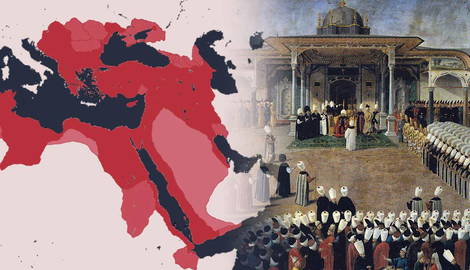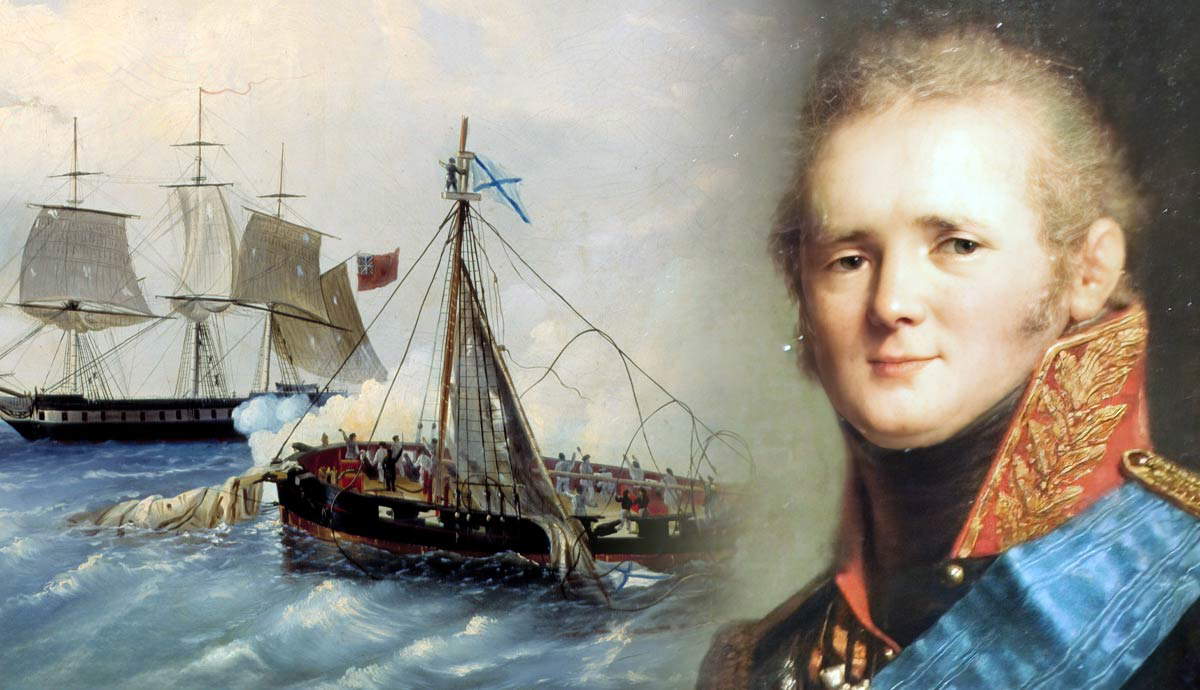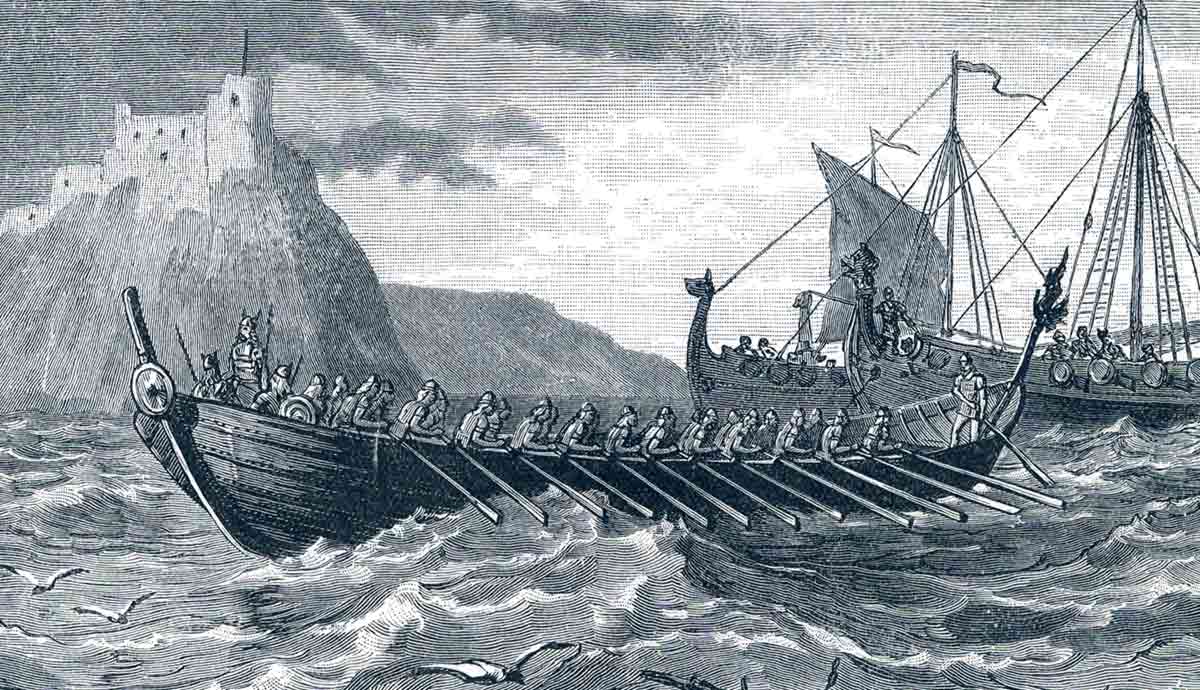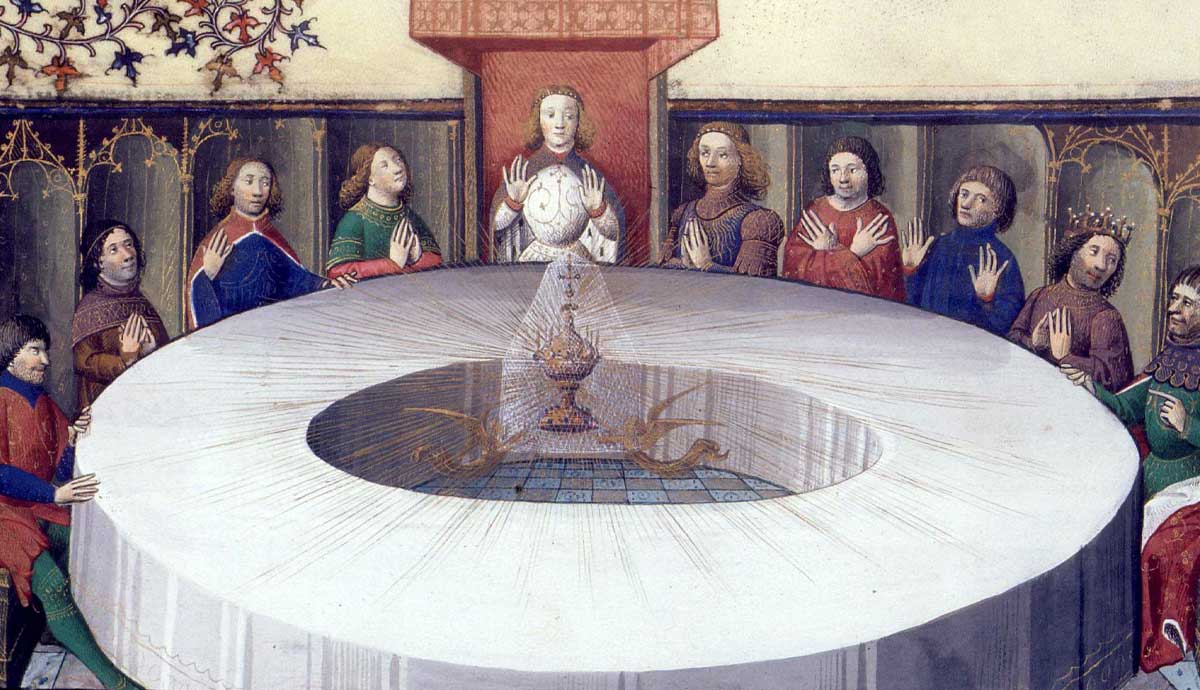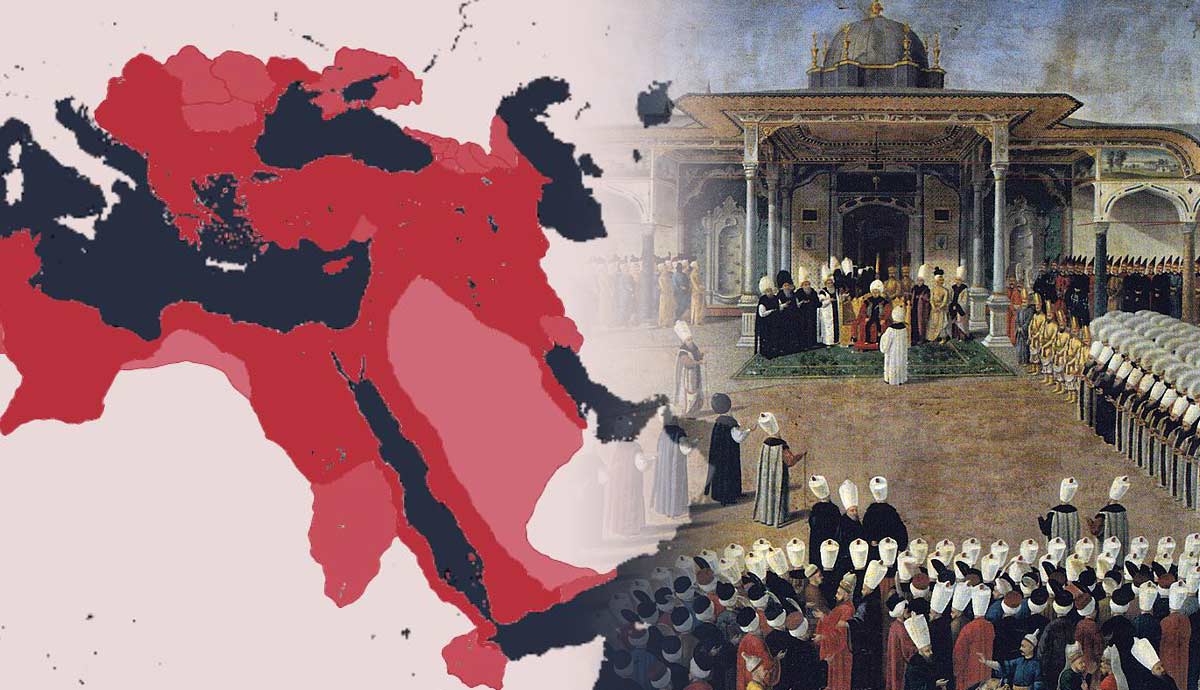
Few empires in history have grown as large or lasted as long as the Ottoman Empire. It was founded in the medieval era and only disappeared in the first decades of the 20th century (Quataert, 2005, 3). Ottoman history is, in many ways, marked by contradictions. It was a Sunni Islamic empire noted for centuries of religious toleration and some of the most bitter ethnic and religious violence in the modern era. Ottoman sultans held powerful titles, which made them supposedly absolute rulers, but they often faced internal opposition.
This article provides a brief overview of the history and legacy of the Ottoman Empire.
What Was the Ottoman Empire?

The Ottoman Empire was a vast and powerful Sunni Islamic state that spanned much of the present-day Middle East, North Africa, and Southeastern Europe for over six centuries.
Followers of the ruling House of Osman became known as “Osmanli,” the origin of the word “Ottoman.” At the start of the 14th century, the Ottomans were one of several Turcoman or Turkish tribes vying for power in Anatolia, or Asia Minor (present-day Türkiye), at the expense of the Byzantine Empire. The Ottomans ruled one of the world’s most powerful and feared empires for three centuries.
However, the empire entered a period of prolonged decline in the 17th century. By the 19th century, following several rebellions resulting in national independence or autonomy in the Balkans, European observers referred to the Ottoman Empire as the “Sick Man of Europe.”
Scholarship today has modified this view of an empire doomed to collapse even as late as the first decade of the 20th century. Nevertheless, the Ottoman Empire experienced many reversals in conflicts with rival imperial powers and rebellious subjects between the 18th and 20th centuries.
How Long Did the Ottoman Empire Exist?

The Ottoman Empire existed for more than 600 years. Officially, the empire lasted 623 years, from 1299 until 1922.
Despite this lengthy history, there were many periods of turmoil and instability. For instance, there was an extended interregnum at the beginning of the 15th century. The Ottoman throne was vacant following Timur (Tamerlane’s) crushing defeat and capture of Sultan Bayezit I at the Battle of Ankara in 1402. Historian Jason Goodwin explains that the empire’s prestige began to recover from Bayezit’s shocking defeat under Mehmet I and his son Murad II (1413-1451) (1998, 28).
Scholars agree more about the empire’s end date than its hazy beginnings in Anatolia. Historian John Freely points out that in 1922, the last reigning Ottoman sultan, Mehmed VI Vahideddin, was forced into exile (1998, 296).
However, historian Caroline Finkel argues that it is better to view the empire’s end date as 1927. According to Finkel, Mustafa Kemal Atatürk formally announced the Turkish Republic’s departure from the Ottoman world (2007, 1).
When Was the Ottoman Empire Founded?

As we have mentioned, scholars debate the empire’s foundation story. According to historian Caroline Finkel, the empire’s founding dates back to 1299 CE, as early Ottoman chroniclers realized it was a rare moment when the Islamic and Christian calendars turned centuries simultaneously (2007, 2).
Ottoman tradition says that the dynasty’s founder, Osman, was the son of a nomadic Turcoman, or Turkish warrior, named Ertuğrul. Ertuğrul and his son Osman were Muslim nomadic warriors known as ghazis.
Author Alev Scott explains that from his base at Söğüt, Osman’s warriors menaced the Eastern Roman or Byzantine Empire and rival Turcoman tribes in Anatolia (2018, 267).
Where Was the Ottoman Empire Located?

At its height, Ottoman territories connected three continents: Asia, Africa, and Europe. Ottoman sultans held sway from Constantinople to Cairo and Belgrade to Baghdad. Moreover, many of the holiest cities for the monotheistic faiths of Christianity, Judaism, and Islam, including Jerusalem, Mecca, and Medina, were under Ottoman rule.
Osman’s early successors, Orhan and Murad I, expanded Ottoman authority in Anatolia and the Balkans. Ottoman armies conquered most of the Balkans during the 14th and 15th centuries.
In Europe, Ottoman expansion was only stopped at the gates of Vienna. Sultan Suleiman I (The Magnificent) unsuccessfully besieged Vienna in 1529, and a second Ottoman siege met a similar fate in 1683.
As the sobriquet “Magnificent” suggests, Suleiman did not experience many defeats on the battlefield. During his reign, the Ottoman Empire secured territory from the rival Safavid Empire, including much of North Africa and Hungary, and dominated the Mediterranean Sea.
What Was the Capital City of the Ottoman Empire?

Several cities following Söğüt served as Ottoman capitals in the empire’s history.
Bursa emerged as the empire’s first capital city. Historian John Freely notes that Bursa was seized from the Byzantines in the late 1320s (1998, 159). Edirne (Adrianople) became the empire’s capital city following its conquest in the 1360s.
However, the conquest of Constantinople in May 1453 gave rise to a new capital city and imperial power that would span multiple continents. Historian Donald Quataert notes that Sultan Mehmet II became known as Fatih (Conqueror) and renamed his new capital Istanbul (2005, 4).
As the Ottomans conquered new capital cities and many territories populated by non-Muslims, they developed a distinct system of governance. Ottoman society was divided along religious lines, organized into distinct communities known as the millet system. Alev Scott notes that millet originates from the Arabic word “milla,” meaning “nation” (2018, xx).
How Was the Ottoman Empire Governed?

Historians Valerie A. Kivelson and Ronald Grigor Suny describe the basic premise of an empire as rule by difference (2017). In other words, different groups of people are governed according to different sets of privileges and obligations, but are all subordinate to the ruler at the top.
The sultan (padishah) was at the top of the imperial hierarchy in the Ottoman Empire. Over time, Ottoman sultans assumed various titles to demonstrate the scope and scale of their power. For example, following the conquest of Constantinople, sultans were also styled as Caesars of Rome.
While sultans claimed a Sunni Islamic caliphate from the 14th century, Ottoman rulers formally assumed the title of caliph after Selim I’s conquest of Egypt in 1517. As a result, they claimed to be the spiritual leaders of all Sunni Muslims.
John Freely explains that Abdülmecid II became caliph but not sultan in November 1922. The caliphate was abolished by Turkish legislation in 1924 (1998, 296-297).
As the empire expanded, it became increasingly decentralized, and local rulers assumed greater authority in their respective provinces. According to historian M. Şükrü Hanioğlu, by the 18th century, the most important characteristic of the Ottoman Empire was its decentralization (2008, 6-7).
However, this began to change during the reign of Sultan Mahmud II (1808-1839). While faced with the first movements for national independence from Ottoman rule, like the Greek Revolution, Hanioğlu explains that Mahmud II also reined in the power of ruling pashas (governors) in many remote provinces (2008, 60-61).
How Did the Ottoman Empire Fall?

The Ottoman Empire collapsed due to a combination of long-term and short-term factors. Centralization and reform efforts in the mid-19th century ultimately produced mixed results for an empire faced with growing external threats from rival European imperial powers, such as Russia, and internal challenges from several nationalist movements.
Moreover, the 1908 Young Turk Revolution seriously affected Ottoman dynastic authority.
Conflict dominated the final decade of the empire’s formal existence. This series of wars began with the war against Italy in 1911-1912. A coalition of states formed the Balkan League and initiated the First Balkan War against the Ottoman Empire in October 1912.
The war with Italy and the Balkan Wars of 1912-1913 resulted in the Ottoman Empire losing virtually all its remaining European territory.
Historian Eugene Rogan notes that the Ottoman Empire entered World War I in late 1914 on the side of the Central Powers, comprising Germany, Austria-Hungary, and later Bulgaria (2015, 68).
Despite stiff resistance against Entente (British, French, Russian) invasions, Ottoman forces lost much of the empire’s territory in the present-day Middle East by the war’s end in 1918. The Ottoman war ended with the armistice at Mudros. The victorious Entente proceeded to carve up former Ottoman territory while Mustafa Kemal’s Turkish nationalists built the Turkish Republic.
What Is the Ottoman Empire’s Legacy?

Historian Donald Quataert emphasized the Ottoman Empire’s varied living legacy (2005, 3). For some, this living legacy involves ethnonationalist violence in areas formerly belonging to the Ottoman Empire.
Imperial collapses tend to leave a trail of violence. For instance, the fall of the Western Roman Empire in the 5th century CE was marked by an extended period of violent conflict and instability. The Ottoman story was no different.
Violence escalated in the empire’s final decades as various nationalist movements fought for independence from Ottoman rule. Ethnonationalist conflict and violence between pro-Ottoman and Turkish nationalists devastated the former heartland of the empire in Anatolia into the 1920s.
However, the Ottoman Empire boasts a legacy beyond the bitter violence of conflicts in the Balkans, the Middle East, and North Africa. Architecture is perhaps the most visible Ottoman legacy across much of the former empire.
The surviving works of Suleiman the Magnificent’s court architect, Mimar Sinan, are important symbols of their respective cities and popular tourist attractions. John Freely notes that Sinan built a total of 321 structures throughout the Ottoman Empire. Many remain standing today, including 85 in Istanbul alone (1998, 199).
References and Further Reading
Finkel, C. (2007). Osman’s Dream: The History of the Ottoman Empire. Basic Books.
Freely, J. (1998). Istanbul: The Imperial City. Penguin.
Goodwin, J. (2000). Lords of the Horizons: A History of the Ottoman Empire. Owl Books. Original work published in 1998.
Hanioğlu, M. Ş. (2008). A Brief History of the Late Ottoman Empire. Princeton University Press.
Kivelson, V.A. and R.G. Suny. (2017). Russia’s Empires. Oxford University Press.
Quataert, D. (2005). The Ottoman Empire, 1700-1922. Cambridge University Press. Original Work published in 2000.
Rogan, E. (2015). The Fall of the Ottomans: The Great War in the Middle East. Basic Books.
Scott, A. (2018). Ottoman Odyssey: Travels Through A Lost Empire. Riverrun.
